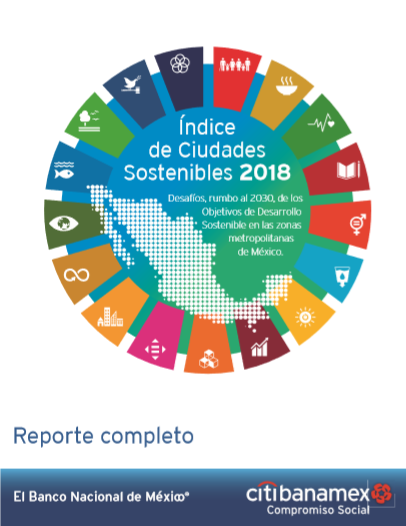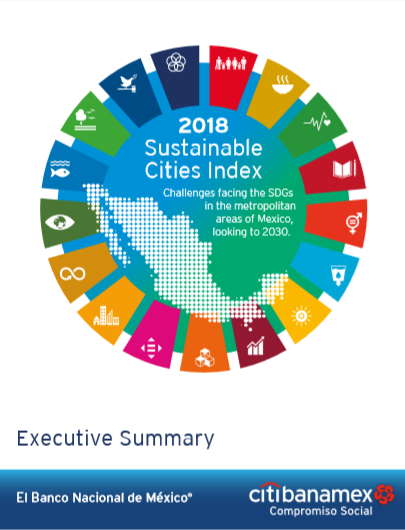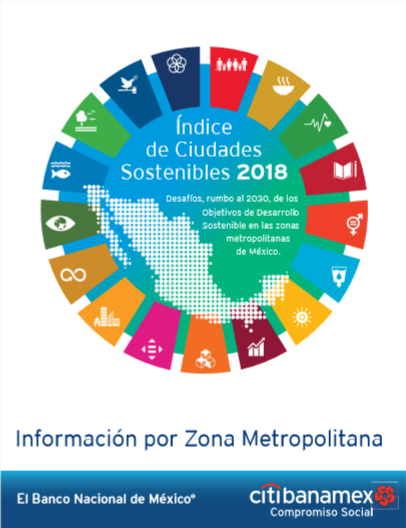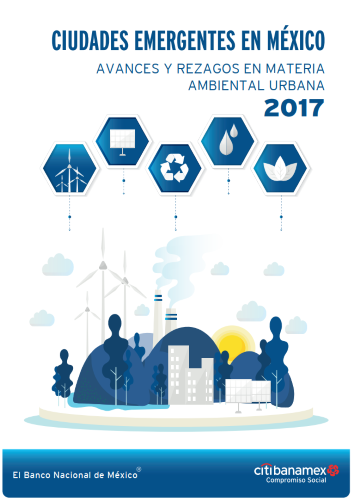Presentation
Sustainable Cities Index 2018
Challenges facing the SDGs in the metropolitan areas of Mexico, looking to 2030.
In September 2015, the United Nations (UN) Assembly approved the Sustainable Development Goals (SDS), which comprise the goals that should guide the efforts of national and local governments in the coming years. The 4th edition of the Sustainable Cities Index 2018 measures the progress of Mexico's metropolitan areas towards compliance with the ODS.
The Index, a pioneering effort at the international level, is one of the first to take sub-national regions as a unit of analysis, taking as a reference the goals of the 2030 Agenda. The Index includes the study of 59 metropolitan areas, which represent 57% of the population and 76% of Mexico's GDP.
The results are presented by means of an index and a heatmap, which were constructed based on 107 social, environmental and economic indicators. The Index has a scale of zero to one hundred, where one hundred is best, and is composed of 16 sub-indices associated with 16 of the 17 SDGs. For its part, the heatmap is used to measure the degree of progress of metropolitan areas by indicator and for each of the objectives. The methodology is based mainly on the SDG Index & Dashboard Report of Sustainable Development Solutions Network and Bertelsmann Stiftung.
On this page, you can consult the results of the Sustainable Cities Index 2018 and graphically compare results between SDGs and metropolitan areas; as well as download the executive summary in Spanish and English, the study and the databases used for its elaboration.
Comments and suggestions from readers to improve the construction of future editions of the Sustainable Cities Index are welcome at the email indiceciudades@cide.edu.






























